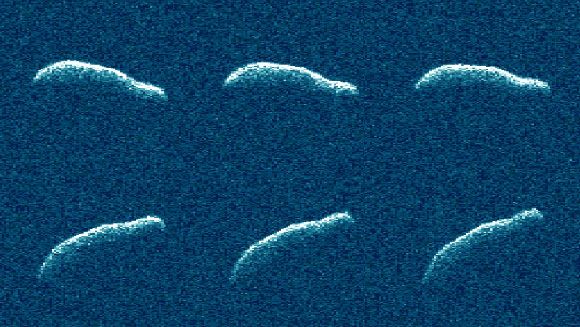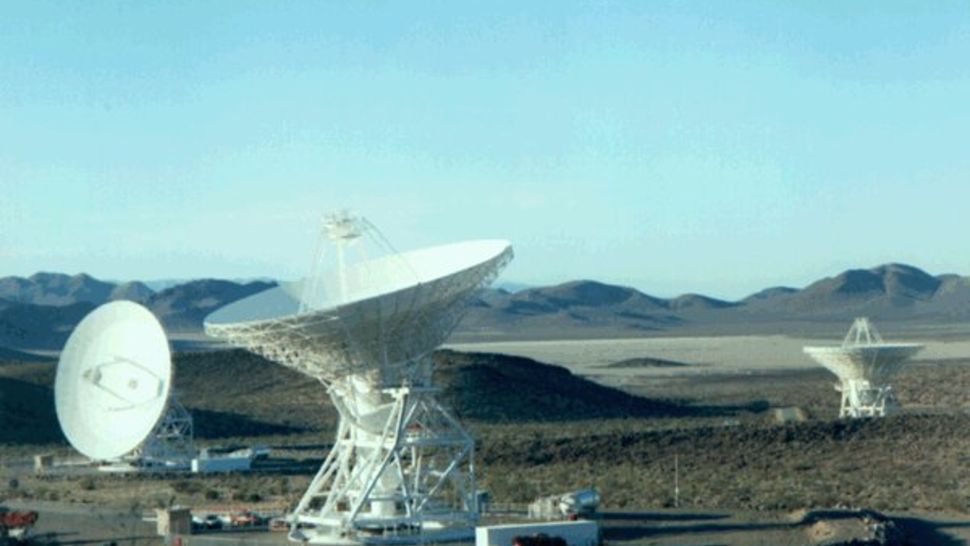Asteroid that came close to Earth and is categorized as “potentially hazardous” has an unusual elongated shape and peculiar rotation.
An asteroid that flew precariously close to Earth in early February has an extremely unusual shape and rotation for an object of its kind, new NASA research has shown.

A recently observed asteroid, categorized as “potentially hazardous,” has surprised astronomers with its elongated shape and unexpectedly slow rotation as it safely passed by Earth. The asteroid, named 2011 AG5, was first discovered by the Mount Lemmon Survey in January 2011 using a telescope situated near Tucson, Arizona. Back then, scientists believed that the asteroid’s orbit around the sun, which takes around 621 days, could result in a catastrophic collision with Earth in 2040. However, a closer look in 2012 revealed that the calculations of its orbit had been significantly off and that it does not pose a genuine danger to our planet.
Astronomers had the opportunity to thoroughly study the asteroid on Feb. 3, 2023, as it flew past Earth at a distance of approximately 1.1 million miles (1.8 million kilometers), almost five times the distance between the Earth and the moon. This close approach enabled them to conduct the first proper scan of the asteroid.
With the aid of a high-powered 230-foot-wide (70 meters) Goldstone Solar System Radar antenna at NASA’s Deep Space Network facility in southern California, scientists were able to obtain multiple images of the asteroid. The blurry snapshots unveiled that 2011 AG5 measures 1,600 feet (500 m) in length and approximately 500 feet (150 m) in width, equivalent to the Empire State Building’s size, as stated by NASA’s Jet Propulsion Laboratory (JPL).
“Of the 1,040 near-Earth objects observed by planetary radar to date, this is one of the most elongated we’ve seen,” Lance Benner , a principal scientist at JPL who helped lead the observations, said in the statement. Most of the scanned space rocks that have whizzed by Earth are much more rounded, he added.
Benner told Live Science via email that the researchers do not want to make any assumptions regarding why 2011 AG5 has an unusual elongated shape until they have had the opportunity to study the new data more extensively.

The recent radar scans of the asteroid allowed scientists to determine its rotation, which takes about 9 hours to complete, longer than most asteroids. The researchers believe that the asteroid’s elongated shape might influence its slow rotation, but the reason behind it is still unknown. Additionally, the scans revealed small dark and light patches on the asteroid’s surface, suggesting the presence of various small-scale features, yet their nature remains unexplained.
The scientists are yet to analyze the new data more closely before drawing any conclusions about the asteroid’s peculiar shape. However, they expect that the additional information gathered from the radar scans could help them predict its future trajectory more accurately, providing insight into its unusual characteristics.
“These new ranging measurements by the planetary radar team will further refine exactly where it will be far into the future,” Paul Chodas , the director forNASA’s Center for Near Earth Object Studies (CNEOS) at JPL, said in the statement. This will increase our chances of learning more about this bizarre space rock, he added.
Although 2011 AG5 will not collide with Earth, it is expected to pass much closer — within 670,000 miles (1.1 million km) of our planet — when it returns for its next flyby in 2040. Any asteroid that passes within 4.7 million miles (7.5 million km) of Earth is classed as a “potentially hazardous asteroid,” according to NASA, so it is important to keep an eye on them.
Do not forget to share your opinion with us to provide you with the best posts !



It’s amazing to pay a quick visit this web
page and reading the views of all friends regarding this paragraph, while
I am also eager of getting knowledge.